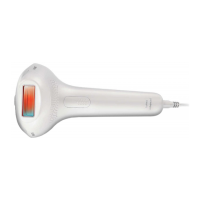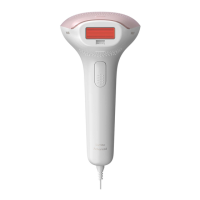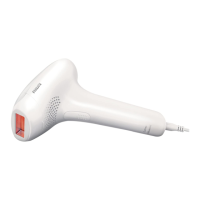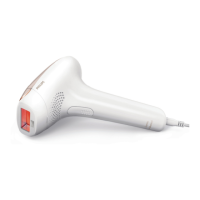Do you have a question about the Philips LUMEA SC1999 and is the answer not in the manual?
Lists general health and physical conditions that prohibit device use.
Details medications and medical history that contraindicate device use.
Specifies skin conditions and states that contraindicate device use.
Identifies specific body areas where the device must not be used.
Alerts users to immediate hazards and risks associated with the device.
Provides crucial warnings about the device's intended use and user limitations.
Offers guidance on how to avoid damaging the device during operation and storage.
Advises on specific precautions to ensure safe and effective device operation.
Lists hair colors for which the device is suitable and effective.
Details the immediate effects and hair behavior observed after the first treatment session.
Explains the reduction in hair growth expected after completing 2 to 3 treatment sessions.
Outlines significant hair reduction and density decrease after 4 to 5 treatment sessions.
Explains the necessary skin preparation steps, such as hair removal and cleaning, before treatment.
Explains the function of the integrated skin tone sensor for safety during treatment.
Describes the different attachments and their purpose for various treatment areas.
Details the use of the body attachment for treating larger body areas below the neckline.
Describes the facial attachment for treating facial hair on the upper lip, chin, and sideburns. Includes cautions.
Explains the bikini attachment for treating coarser hair in the bikini area.
Details the initial treatment plan for the first 4-5 sessions, occurring every two weeks.
Explains the maintenance phase, recommending touch-ups every 4-8 weeks as needed.
Describes typical, mild skin reactions like redness and itching after treatment.
Details uncommon but potential side effects like burns, discoloration, and infections.
Describes a rare reaction of localized brownish skin, often seen with darker tones.
Details the rare occurrence of small blisters on the skin surface after treatment.
Explains scarring as a potential secondary effect of burns that may take time to heal.
Describes inflammation and pus formation around hair follicles, a rare side effect requiring medical attention.
Discusses causes of pain during or after treatment, such as incorrect usage or sensitive areas.
| Brand | Philips |
|---|---|
| Model | LUMEA SC1999 |
| Category | Hair Removal System |
| Language | English |











